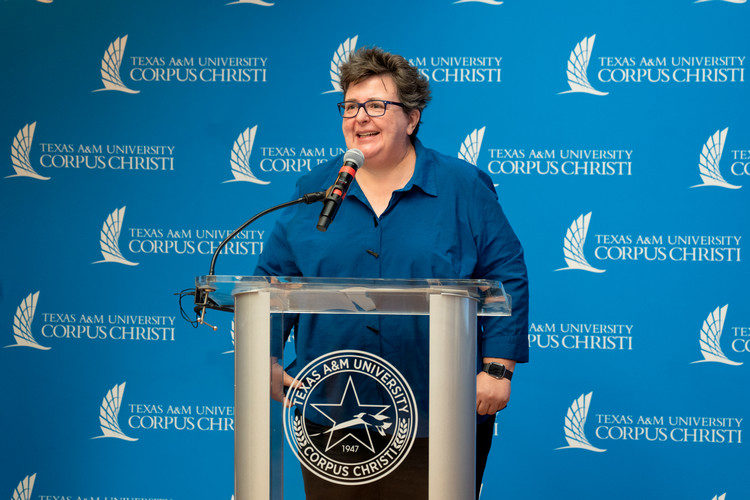Art Professor Greg Reuter Looks Back on 40 Years of Teaching
When Art Professor Greg Reuter arrived from California to teach ceramics and sculpture at Corpus Christi State University in 1978, the University stationery still had the name Texas A&I University-Corpus Christi. In the ensuing 40 years, Reuter has taught thousands of students, lectured in Mexico, Germany, and Japan as well as in the United States, and shown his artwork across the globe. Reuter’s work also appeared in the 1988 film, “D.O.A.,” which starred Dennis Quaid and Meg Ryan. Reuter retired in December 2018.
What was the University like in those days?
It was a small campus with lots of committed people who had been working together on growing our potential. The energy was great and we all knew we were on the cusp of something bigger. My first office was in an old military barracks that has now been torn down, and the Center for Arts was still under construction.
Over a 40-year career, technology has evolved and yet some of the classes are still very traditional. How has technology changed the way you teach?
I’ve always tried to keep up with the latest materials and tools to create work. We used to just use plaster molds but now silicon rubber is cleaner and more efficient. The one thing about being a teacher is you evolve and grow your techniques just as much as your students, but you always stay one step ahead. There’s value in understanding history and the way we used to do things, but sometimes the concept and how it relates to who we are today is more important than the process. To realize your vision today, you might need a computer, a piece of paper, or you just might need a piece of clay to dive right in.
You started the Oso Bay Biennial, a long-running creative conference that attracts artists from all over the U.S. What does that mean to you?
I've got 20 Oso Bay Biennials under my belt. We’ve had shows in the gallery with work from French sculptor Auguste Rodin (1840-1917). We have brought famous artists from all over the world. The Bell Library’s History Harvest project has agreed to house my box of Oso Bay material. Those records are a real testament to what our department has done, who we brought to campus, and how we impacted the local and national arts scene.
How has the student population in the art department changed through the years?
When I first came, we were a small commuter campus. However, we began growing right away. We were drawing students from San Antonio, Houston, and the Valley, but now with the new graduate program, we’re enrolling students from all over. Our major focus is to get students either a teaching credential or into graduate school; 90 percent of our Bachelor of Fine Arts majors continued on to graduate school and are now teaching.
What's ahead for you?
I’m an artist, so it’s time for me to develop that part of my life. I recently created an art history book called “Reuter: A Survey, 1967 to 2002” with pages 7 feet tall and 3 feet wide that was on display at K Space Contemporary in March 2019. I also have a one-person show scheduled to open in September 2019 at the Rockport Art Center.
Additional Information
Reuter’s public works in Corpus Christi
- “Return” tile floor mural, Corpus Christi City Hall Atrium, 1987 (collaborated with William Wilhelmi)
- “Melville’s Moby Dick” ceramic tile mural, Greenwood Library, 1992
- “Trace Remains” bronze castings, Janet F. Harte Library, 2006
- “Traces of Corpus Christi” bronze castings, Corpus Christi Art Center, 2009 (collaborated with Jack Gron)
- “A Year in Sand” bronze sculpture, Harte Research Institute, Texas A&M University-Corpus Christi
- Floor tile mural, University Center, 1999 (collaborated with William Wilhelmi)

































